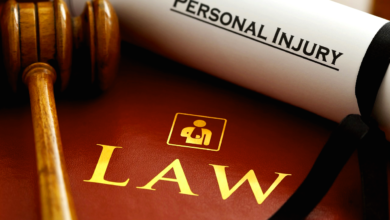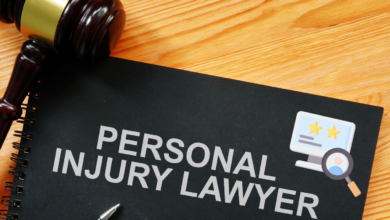Understanding Pain and Suffering Damages in 2024
Pain and suffering damages in 2024 are crucial for legal claims. Understand how these damages are calculated and applied.

Pain and suffering damages are a crucial part of compensation in legal scenarios because they cover the emotional and physical hardship that injured victims go through. As 2024 goes on, the landscape of these damages is continually evolving, reflecting changes in regulatory frameworks and societal views. This article delves into the nuances of pain and suffering damages, including language, legal repercussions, computation approaches, and overall effects on people’s lives.
In addition to monetary compensation, the concept of pain and suffering damages has expanded in recent years to encompass the total effects of accidents. This progression is essential to ensuring that people affected have full and just legal remedies, and it highlights the variety of strategies that will be required in assessing and advocating for these types of compensation in 2024 and beyond.
Understanding Pain and Suffering Damages in 2024
What Are Pain and Suffering Damages?
Pain and suffering damages are a type of compensation awarded in personal injury cases. They cover the physical and emotional distress that a person endures due to an injury. Think of it as a way to make up for the intangible costs—those sleepless nights, the constant pain, and the emotional toll.
Legal Framework for Pain and Suffering Damages
Historically, pain and suffering damages have been a cornerstone of personal injury law. In 2024, we’ve seen some significant tweaks. These changes aim to streamline the process and ensure fair compensation.
Types of Pain and Suffering Damages
Physical Pain
This type of damage refers to the actual physical discomfort and suffering experienced as a result of an injury. It includes sensations such as acute pain, chronic pain, physical limitations, and the overall impact on daily activities. Physical pain damages aim to compensate individuals for the tangible suffering they endure due to their injuries, addressing both immediate discomfort and long-term consequences.
Emotional Distress
Emotional distress damages encompass the psychological impact of an injury, including anxiety, depression, fear, and trauma. These damages recognize the profound mental and emotional toll that injuries can inflict, affecting a person’s quality of life, relationships, and overall well-being. Emotional distress claims often require expert testimony and evidence to substantiate the psychological effects and their impact on the individual’s daily life.
Loss of Enjoyment of Life
This category of damages compensates individuals for the loss of ability to participate in activities and hobbies they once enjoyed due to their injuries. It acknowledges the diminished quality of life experienced as a result of physical or emotional limitations imposed by the injury. Loss of enjoyment of life damages seek to restore some measure of normalcy and fulfillment by providing compensation for the inability to engage in meaningful activities and experiences.
Other Non-Economic Damages
Non-economic damages can encompass a wide range of intangible losses that do not have a direct financial cost but significantly impact an individual’s life. This may include loss of consortium (damage to personal relationships), reputational harm, and other forms of non-monetary losses that result from the injury.
Calculating Pain and Suffering Damages
Calculating these damages isn’t a one-size-fits-all approach. Here are the two main methods:
Multiplier Method
Multiply the actual damages (like medical bills) by a number typically between 1.5 and 5.
Per Diem Method
Assign a daily rate to the pain and suffering and multiply it by the number of days the victim is expected to endure the pain.
Factors influencing the calculation include the severity of the injury, the impact on daily life, and the duration of the pain and suffering.
Examples of Pain and Suffering Damages
2024 has seen some eye-opening case studies. For instance, there was a landmark case where a victim received substantial compensation for both physical and emotional distress. These cases highlight the nuances and variability in pain and suffering awards.
Challenges in Proving Pain and Suffering
Proving pain and suffering can be tricky. It’s subjective—what’s excruciating for one person might be manageable for another. Solid documentation and credible evidence are key here. Medical records, personal diaries, and testimony from loved ones can make a big difference.
Role of Medical Experts
Medical experts play a pivotal role in these cases. They provide the objective evidence needed to support claims. From doctors to mental health professionals, their testimonies can make or break a case.
Impact of Legislation on Pain and Suffering Claims
The legal landscape is ever-evolving. In 2024, new laws have reshaped how pain and suffering claims are handled. These changes aim to balance the scales, ensuring fairness for both claimants and defendants.
Insurance and Pain and Suffering Damages
Insurance companies are often involved in these claims. They have their tactics to minimize payouts, so it’s crucial to be prepared. Understanding their strategies can help you counteract them effectively.
Hiring a Lawyer for Pain and Suffering Claims
Having a lawyer can be a game-changer. They navigate the legal maze, advocate for your rights, and help maximize your compensation. Look for someone with experience in personal injury law and a track record of success.
Maximizing Your Pain and Suffering Compensation
Preparation is key. Document everything, seek medical attention, and don’t shy away from emotional support. The more comprehensive your evidence, the stronger your case.
Common Myths About Pain and Suffering Damages
Only physical injuries count. Emotional and psychological impacts are equally important. And Pain and suffering are minor compensations.They can be substantial, depending on the case. And You can exaggerate your pain without consequences. False claims can backfire and harm your case.
Emotional and Psychological Impact of Pain and Suffering
Pain and suffering aren’t just about physical discomfort. The emotional and psychological toll can be profound and long-lasting. It’s essential to address these aspects for holistic recovery.
Read More: Common Mistakes in Personal Injury Claims and How to Avoid Them
Conclusion
FAQs
What qualifies as pain and suffering?
Pain and suffering cover both physical discomfort and emotional distress resulting from an injury.
How long does it take to settle a pain and suffering claim?
It varies, but typically it can take several months to a few years, depending on the case’s complexity.
Can you sue for pain and suffering without physical injury?
Yes, emotional distress and other non-physical impacts can also qualify for compensation.
How do courts determine the amount for pain and suffering?
Courts consider factors like the severity of the injury, impact on daily life, and duration of pain when determining the amount.
What evidence is needed to support a pain and suffering claim?
Medical records, personal testimonies, expert witness statements, and detailed documentation of the impact on your life are crucial.











